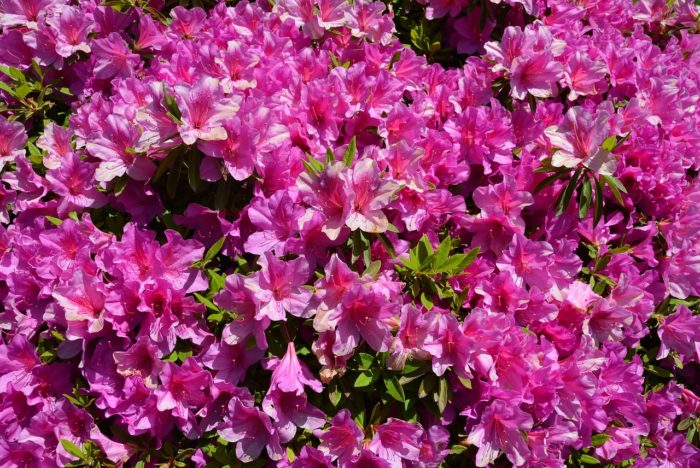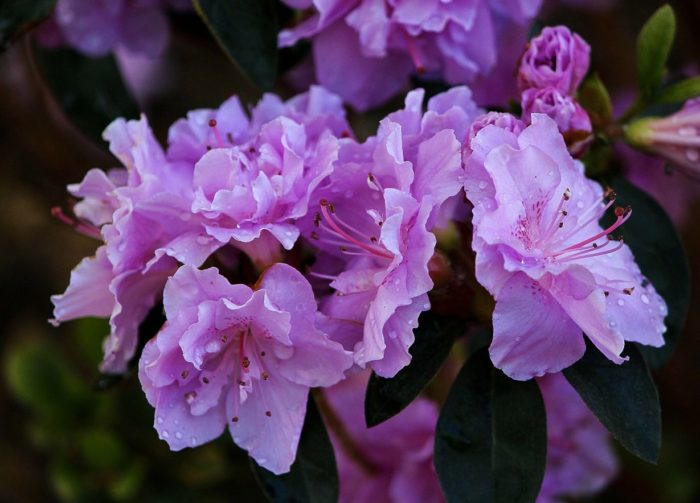Let's talk about a flower called azalea: we'll share the rules of care at home and what the flower needs for lush flowering. With proper care, this plant will delight the owner's eye and fill the room with a special atmosphere. Azalea requires compliance with certain growing rules - and following them allows you to grow a real indoor beauty.
Caring for azaleas at home
An azalea will grow and bloom successfully if you follow some rules. It is not recommended to postpone transplanting older plants with developed roots into a new pot.Instead, young plants are moved to larger pots every year, and plants older than two to three years - at least once every two to three years.
After transplantation, all that remains is to find a suitable place for the azalea with stable temperature and humidity. You should not place the pot under the scorching sun for a long time, as this will cause the roots to dry out. Instead, it's best to choose a location that gets plenty of light without direct sunlight, and provide regular watering to keep the soil moist. It is also advisable to avoid sudden changes in temperature so that the plant is stressed during the growth process.
Air humidity and watering for azaleas
The natural habitat of this perennial is in the humid tropics, so it certainly needs a moist environment. It is especially important to monitor the level of air humidity in the room during the heating season, when hot radiators lead to excessive dryness of the air. However, you should moisten the soil carefully and maintain a fine line, because azalea is very capricious - drying out the soil and lack of air for the roots will be equally harmful to it. Excessive soil moisture is also unacceptable for azaleas.
It is good to have a regular spray bottle on hand and regularly take a light shower with cool water. It is enough to use a spray bottle once a day to provide the required level of humidity for the plant. But we must remember that during the flowering period such procedures lead to spots on the petals. Therefore, it is better to place containers of water next to the pot at this time to ensure the required level of humidity.
You should avoid the common misconception that ice cools the potting soil and helps the plant. Such dubious procedures harm the roots, which in turn leads to the death of the plant.
Soil requirements for growing azaleas
The roots of this perennial are very superficial, therefore, for its optimal growth and development, wide and not very deep containers are chosen. It is also important to take into account that the soil for azaleas must have an acidic environment (pH 4-4.5). The best option for this purpose is a mixture of one part quicklime peat and two parts coniferous soil. You can add a small amount of washed river sand - this will help to avoid too high humidity levels.
Feeding azaleas: recommendations
For optimal growth and flowering of azaleas, it is recommended to use mineral fertilizers that contain large amounts of potassium or phosphorus. However, you need to be careful when choosing fertilizers that contain chlorine, as they are harmful to the plant.
When choosing fertilizers for azaleas, it is recommended to pay attention to options such as “Uniflor-bud” or “Kemira-Lux”, and in combination with fertilizers from the “Azalea” series they will provide the necessary balance of nutrients.
It is recommended to feed the plant in spring and summer, up to once a week. In winter, the feeding process can be reduced to once a month, given that at this time the plant shows minimal activity.
Transplanting azaleas: rules and tips
Transplantation is carried out immediately after purchasing the plant, preferably before the flowering period begins. One of the key conditions for replanting is to use a pot at least five centimeters larger than the previous one.Experienced gardeners recommend following certain time frames for replanting:
- For young plants, it is recommended to replant annually, preferably in the spring, but taking into account the fact that it should not occur during the growing season or winter.
- An adult flower requires replanting less often - only once every two to three years.
With each transplant, it is necessary to carefully inspect the bush and remove dried or withering shoots, leaves and roots - such measures are welcomed by experienced gardeners.














